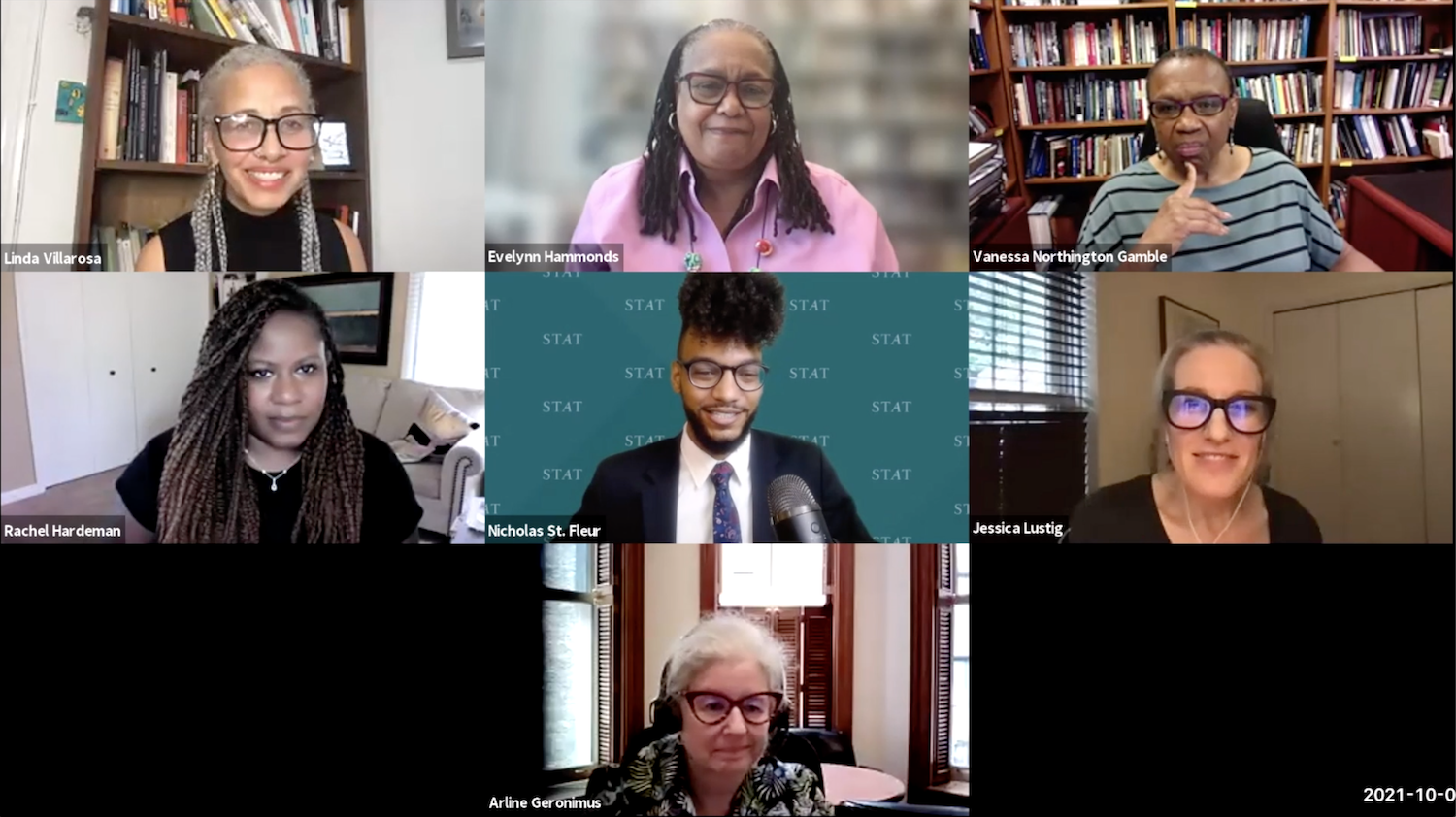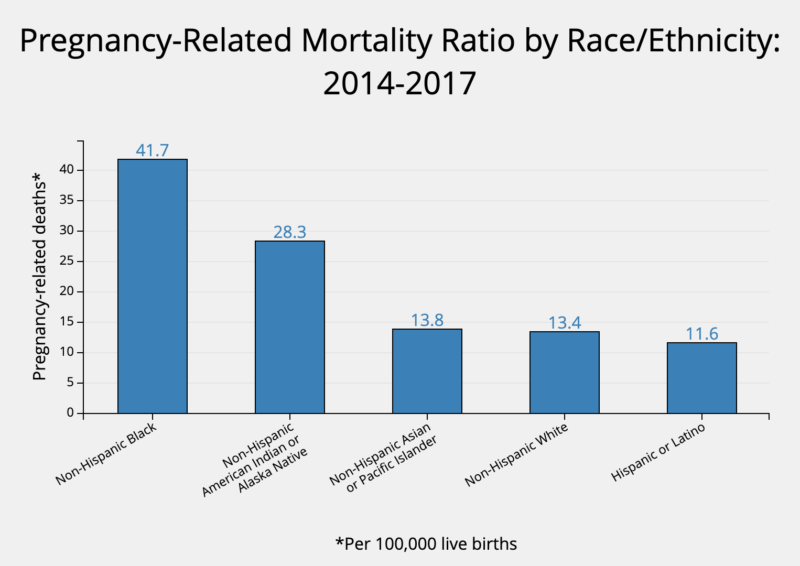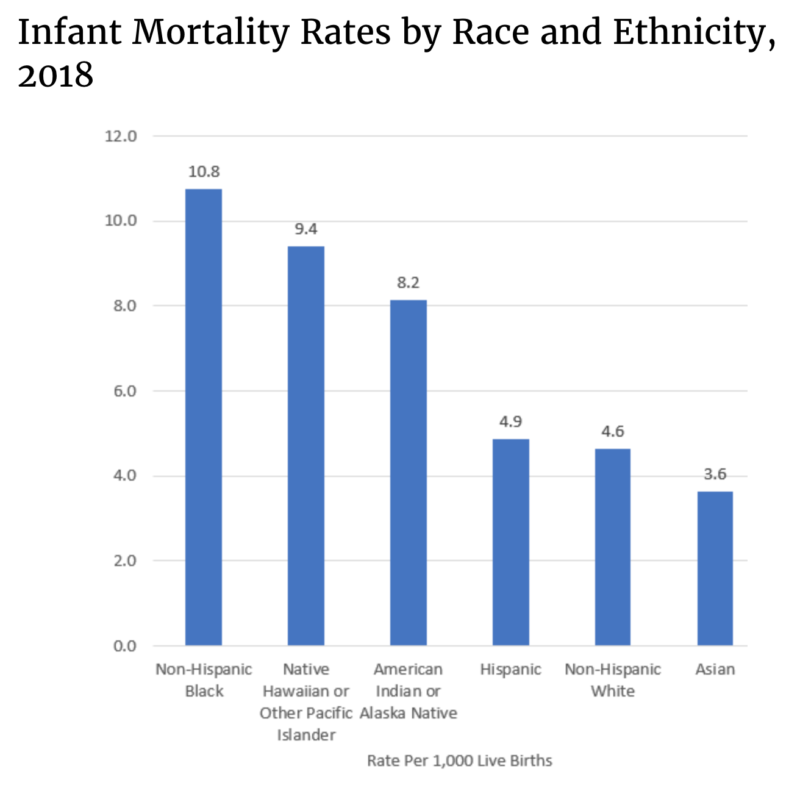
Journalists and researchers share challenge of spotlighting connections between health and racism
Journalist Linda Villarosa (upper left) is joined by (left to right, top to bottom) co-moderator Evelynn Hammonds, panelists Vanessa Northington Gamble and Rachel R. Hardeman, co-moderator Nicholas St. Fleur, and panelists Jessica Lustig and Arline Geronimus for a lively online discussion of health and racism at ScienceWriters2021.
Battling entrenched stereotypes with science and thorough reporting.
Researchers and journalists who work to expose the roots of unequal health burdens in the United States share a special burden themselves, science writers learned during a workshop discussion organized by the Council for the Advancement of Science Writing Wednesday, Oct. 6 at the ScienceWriters2021 virtual conference. Both sets of professionals have a role in correcting stereotypes and bringing essential truths about health and racism to public view.
The discussion focused on journalist Linda Villarosa’s 2018 New York Times Magazine article, Why America’s Black Mothers and Babies Are in a Life-or-Death Crisis, which combined vivid narratives of patient stories with extensive historical context and interviews with scientists and scholars. Her research explored the role of weathering—the cumulative impact of lifelong racism on a woman’s health—in addition to documenting the poor health care Black mothers and babies often receive.
Villarosa, who did a year-long fellowship in public health at Harvard University before taking on the story, said she was motivated to write the piece partly by the persistence of inaccurate narratives about the high death rates among Black mothers and babies. Society often looks for “personal responsibility” rationales, she said, ”to both sort of deflect our own responsibility for some of these systemic and institutional issues and also blame a person for problems that they did not create—and to minimize the institutional and structural issues that provide barriers to their well-being.” She wanted to show readers “that there is more to this story than just somebody is irresponsible.”

The causes of persistent high death rates among Black mothers and babies continue to be debated, and scholars working in the field battle skepticism from those who believe the answer must lie in explanations that are refuted by evidence: mothers’ lifestyle choices, or genetic factors.
In the session, organized with support from the Kavli Foundation as the second in a series of programs on issues of responsibility and values in science journalism at ScienceWriters conferences, Villarosa was joined by researchers who have studied the history and current reality of persistent poor outcomes for Black mothers and babies. The researchers emphasized that journalism like Villarosa’s is important in battling entrenched and inaccurate narratives.

Villarosa’s Times Magazine editor, Jessica Lustig, recalled knowing that a story on this tension-fraught topic “had to be airtight, bulletproof, because a lot of people are invested in believing that maybe there isn’t a systemic reason for outcomes, maybe that it’s about choice, a lifestyle.” She urged Villarosa to present her evidence directly, to place systemic failures squarely in the public eye.
“We can leverage our research to change the narrative, particularly around racism,” said Rachel R. Hardeman, a reproductive health equity researcher and founding director of the Center for Antiracism Research for Health Equity at the University of Minnesota. “And that requires engaging with really good and thoughtful journalists who are willing to tell those stories and who are really willing to listen and understand the nuances of this issue.”
Vanessa Northington Gamble, an internationally recognized expert on the history of race and American medicine at George Washington University, said Black scholars have been working to expose scientific racism since the 19th century. Many narratives fail to acknowledge these efforts and focus on Black victimization rather than the day-to-day experiences of the average Black American.
“We still have a long way to go,” Hardeman agreed. “but it is thanks to the partnerships of scholars like Arline Geronimus and those of reporters and journalists like you, Linda Villarosa, who are able to tell that story in a way that lifts up the science as well as the deep pain of those stories and narratives.” It is a journalist’s obligation to understand “Racism 101” and remain wary of one’s own blind spots to avoid reinforcing harmful stereotypes. Articles like Villarosa’s, she said, have help shift scholarship from focusing solely on racial health disparities to unapologetically pointing the finger at racism in America.
Geronimus, a University of Michigan public health expert whose research established the concept of weathering, was a source for Villarosa’s article and joined in the discussion.
The panelists’ call to science journalists: be careful, cautious, and intentional. Avoid the pressure to “get the clip,” the rush to get a news story out first; instead, engage to uplift these parts of society who have been poorly represented. Journalists have the power to weave connections between the human experience with rigorous data to unveil social injustice. They have a responsibility to use writing as a tool to bring these stories to light because as Villarosa says, “We’re all part of these stories. We all have skin in this game.”